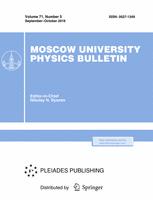A number of samples that simulate the chemical composition of carbonaceous aerosols emitted by transport into the atmosphere have been synthesized using the method of deposition of organic compounds and sulfuric acid, which are identified in the particulate coverage of diesel and aircraft engine soot particles, onto the surface of elemental carbon. The analysis of water adsorption isotherms allows one to estimate the influence of the surface chemistry of particles on the degree of their hygroscopicity. Water adsorption measurements show that modification of a particle surface by nonpolar organics (aliphatic and aromatic hydrocarbons) leads to the hydrophobization of a soot surface. The impact of polar oxygen-containing organic compounds (ethers, ketones, aromatic, and aliphatic acids) on adsorption capacity with respect to the water of samples that they modify substantially depends on the nature and composition of the hydrophobic part of the molecules. Among the ionic compounds organic acid salts have the most hydrophilization effect, which is comparable with the adsorption capacity of soot with sulfuric acid deposited on its surface. This observation allows one to quantitatively define how the nature of chemical compounds on soot surface influences water adsorption and to estimate the interaction of water molecules with fossil fuel combustion particles in a humid atmosphere.
$^1$Institute of Nuclear Physics, Moscow State University, Moscow, 119991, Russia
$^2$Chemistry Department, Moscow State University, Moscow, 119991, Russia



